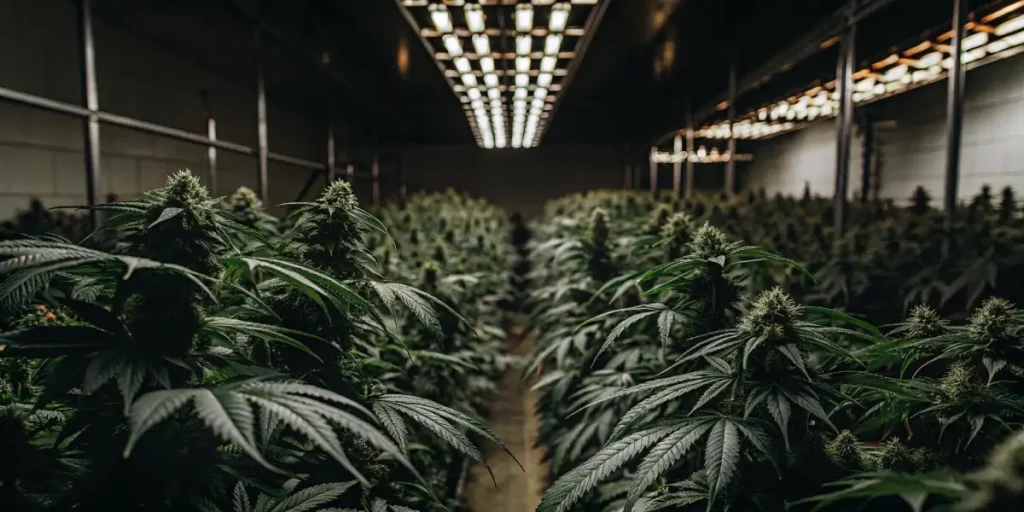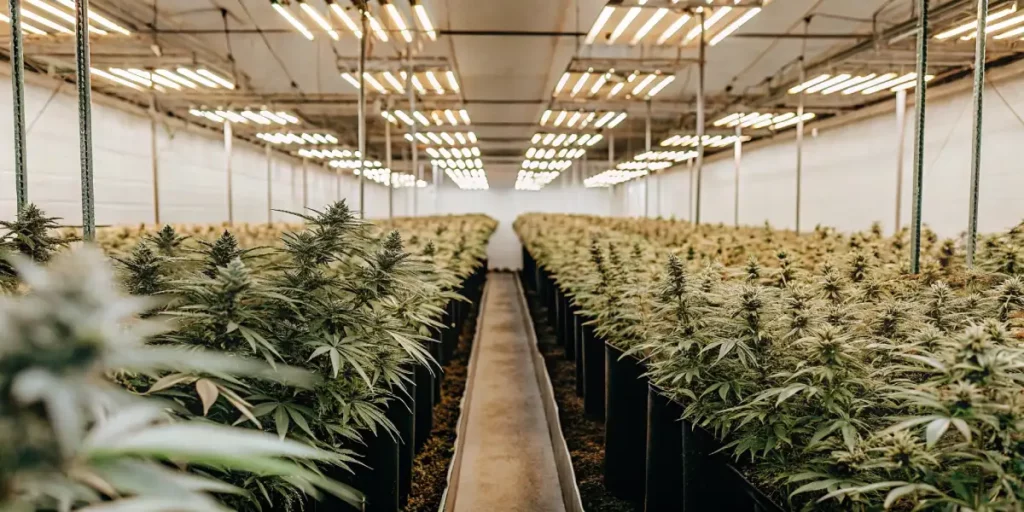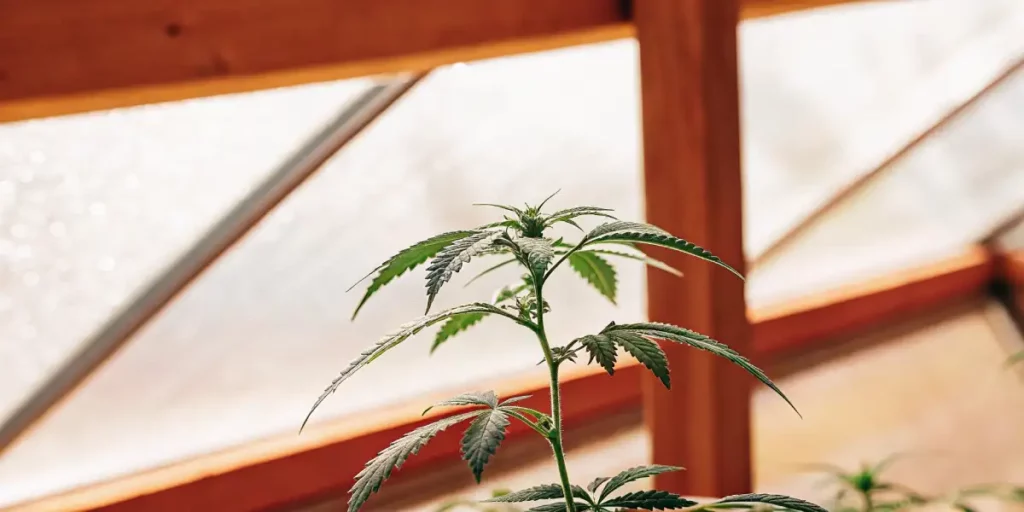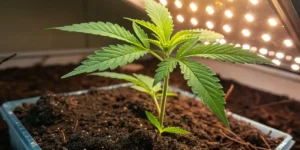How to grow autoflower plants is a common question among new cultivators, and for good reason. Growing autoflower plants can be a fun and rewarding experience. These cannabis plants are known for their ability to flower automatically after a certain period, regardless of the light cycle. This makes them an ideal choice for both beginners and seasoned growers. They are typically smaller, faster, and less demanding than their photoperiod counterparts.
Let’s dive into practical tips and real-life techniques on how to grow autoflower plants. Whether you’re growing indoors in a small tent or outdoors in your garden, knowing the specific needs of autoflowers will help you maximize your yield while avoiding common pitfalls.
Autoflower cannabis strains are often more forgiving, allowing you to experiment and learn. With the right approach, you can enjoy a bountiful harvest in less time than traditional cannabis plants. We’ll cover everything from soil selection to the best light schedule for your plants, ensuring a healthy and successful grow.
How to grow autoflower plants: choosing the best soil for strong, healthy growth
The best soil for growing autoflower cannabis is light and airy, allowing for good drainage and root development. A soil mix with plenty of organic matter, such as peat moss or coco coir, provides the necessary nutrients and aeration. Avoid compacted or heavy soils that can suffocate roots and hinder growth.
Consider adding perlite or vermiculite to your soil to improve drainage and airflow. This is particularly important if you’re growing in containers. A good soil mix will support healthy root development, which is crucial for the overall health of your plants.
When learning how to grow autoflower plants, ensuring the right soil composition is paramount. The inclusion of organic amendments like worm castings or compost not only enriches the soil but also promotes beneficial microbial activity, enhancing nutrient availability. Additionally, soil pH should be monitored and maintained between 6.0 and 7.0 to optimize nutrient uptake.
Another aspect to consider is the soil’s ability to retain moisture without becoming waterlogged. A well-balanced soil mix will retain enough moisture to sustain the plants between watering sessions, reducing the risk of root rot. By tailoring the soil to meet these needs, growers can set a strong foundation for their autoflower plants to thrive.
Optimal Light Schedule for Autoflower Plants
One of the main advantages of autoflower plants is their ability to power flower under a variety of light schedules. Unlike photoperiod cannabis, autoflowers do not rely on changes in light to trigger flowering. However, providing an optimal light schedule for autoflower plants can increase yield and potency.
Many growers find success with a 18/6 light schedule, meaning 18 hours of light and 6 hours of darkness each day. Some even opt for a 20/4 schedule to maximize growth. The key is to provide consistent light to support photosynthesis and energy production.
Incorporating an optimal light schedule for autoflower plants not only enhances growth but also boosts resin production and overall plant vigor. Consistent lighting helps maintain a stable environment, minimizing stress and encouraging robust development. Monitoring light intensity and ensuring an even distribution across the canopy are equally important for uniform growth.
While experimenting with light schedules, consider the specific needs of your chosen strain. Some autoflowers may thrive with extended light exposure, while others might prefer a more balanced approach. Adjusting the light schedule based on plant response can further refine how to grow autoflower plants effectively, ensuring high-quality harvests.

Nutrients for Healthy Autoflower Growth
Feeding your autoflowers the right nutrients is essential for healthy growth. Autoflowers require a balanced mix of macronutrients and micronutrients. While they are generally less nutrient-hungry than photoperiod plants, you should still pay attention to their needs at different growth stages.
During the vegetative stage, focus on providing nitrogen-rich fertilizers to promote leafy growth. As your plants transition to the flowering stage, switch to a phosphorus and potassium-rich formula to support bud development. Always follow feeding schedules and adjust based on plant response.
Knoeing the function of nutrients for healthy autoflower growth is crucial in preventing deficiencies and maximizing yield potential. Macronutrients like nitrogen, phosphorus, and potassium are vital, but don’t overlook the importance of micronutrients such as calcium, magnesium, and sulfur. These elements play a key role in chlorophyll production and enzyme function.
Applying nutrients in a gradual manner allows the plants to acclimate and absorb what they need without the risk of nutrient burn. Regularly checking the pH levels of your nutrient solution ensures that the nutrients remain bioavailable. By aligning feeding strategies with the plant’s life cycle, growers can optimize how to grow autoflower plants successfully.
Tips for Maximizing Autoflower Yield
Maximizing autoflower yield involves a combination of proper care and strategic techniques. Start by ensuring your plants have enough space and light. Crowded conditions can limit growth and reduce yield. Pruning and training techniques like low-stress training (LST) can encourage more bud sites and even canopy exposure.
Keep an eye on environmental factors such as temperature and humidity. Autoflowers thrive in temperatures between 68-77°F with moderate humidity levels. Ensuring optimal conditions throughout the growth cycle will result in healthier plants and bigger yields.
Implementing tips for maximizing autoflower yield extends beyond basic care; it involves creative strategies like utilizing reflective surfaces to increase light penetration. Reflective materials can help distribute light more evenly, reaching lower branches and boosting overall plant productivity.
Additionally, maintaining a clean growing environment minimizes pest and disease risks, which can adversely affect yield. Regularly inspect your plants for signs of stress or infestations. By combining these practices with a solid knowing of how to grow autoflower plants, you can achieve impressive harvests.
Common Mistakes in Autoflower Cultivation
Even the most seasoned growers can encounter challenges when growing autoflowers. One common mistake is overfeeding. Autoflowers are sensitive to nutrient levels, so it’s important to start with lower doses and gradually increase as needed. Watch for signs of nutrient burn, such as yellowing leaves or burnt tips.
Another mistake is inadequate light. While autoflowers are less demanding, they still need ample light to thrive. Ensure your light source is powerful enough and properly positioned. Additionally, avoid overwatering, as this can lead to root rot and other issues.
Among common mistakes in autoflower cultivation is neglecting the importance of pH balance in both soil and nutrient solutions. An improper pH can lock out essential nutrients, leading to deficiencies and stunted growth. Regular pH testing and adjustments are vital to maintaining plant health.
Failure to adapt to environmental changes can also impact plant development. Autoflowers may suffer from stress if temperatures or humidity levels fluctuate dramatically. Knowing these common pitfalls and how to grow autoflower plants effectively can prevent setbacks and promote a successful growing experience.
Recommended Strains from Global Green Genetics
When selecting cannabis strains, it’s important to choose varieties that suit your growing conditions and personal preferences. Here are three autoflower strains from Global Green Genetics that are popular among growers:
- Northern Lights Auto: Known for its resilience and ease of growth, Auto Northern Lights is a great choice for beginners. It offers a relaxing, euphoric high and performs well both indoors and outdoors.
- Auto Blueberry: This strain is prized for its sweet aroma and potent effects. Auto Blueberry is compact and fast-flowering, making it ideal for discreet grows or limited spaces.
- Auto White Widow: A classic favorite, Auto White Widow is renowned for its high resin production and balanced effects. It’s easy to grow and delivers consistent yields.
Exploring recommended strains from Global Green Genetics can simplify your journey in learning how to grow autoflower plants. Each strain offers unique characteristics and growth patterns, allowing you to select one that aligns with your goals and environmental conditions. By experimenting with different strains, you can discover what works best for your setup.
Auto Northern Lights, Auto Blueberry, and Auto White Widow are just a few options that provide diverse effects and flavors. These strains offer growers the opportunity to enjoy varied experiences, from relaxing highs to aromatic delights. By choosing the right strain, you can enhance your cultivation experience and enjoy a rewarding harvest.

FAQs of how to grow autoflower plants
What is the best soil for growing autoflower cannabis?
The best soil for growing autoflower cannabis should be light, well-draining, and rich in organic matter. A mix that includes components like peat moss, coco coir, and perlite provides the ideal balance of nutrients and aeration. These elements help ensure that your plants’ roots receive enough oxygen and moisture without becoming waterlogged.
It’s also beneficial to include some compost or worm castings in your soil mix. These natural amendments provide additional nutrients that contribute to healthy plant growth. By choosing the right soil, you set a strong foundation for your autoflowers, helping them thrive throughout their life cycle.
When determining the best soil for growing autoflower cannabis, it’s also crucial to consider the soil’s texture and ability to retain nutrients. A loamy soil type, known for its ideal balance of sand, silt, and clay, can further enhance growth by supporting robust root systems.
Besides to the basic components, incorporating biochar into your soil mix can improve nutrient retention and promote beneficial microbial activity. This can lead to healthier plants and more efficient nutrient uptake, ultimately improving how to grow autoflower plants successfully.
How to grow autoflower plants: what is the optimal light schedule?
Autoflower plants are versatile and can adapt to various light schedules, but an 18/6 light schedule—18 hours of light and 6 hours of darkness—is often recommended for optimal growth. This schedule offers a balance that promotes vigorous growth and efficient energy use, supporting both vegetative and flowering stages.
Some growers experiment with a 20/4 schedule to push for even faster results. The key is to maintain consistency, ensuring your plants receive adequate light to drive photosynthesis. With the right light schedule, your autoflowers will develop into strong, high-yielding plants.
For growers seeking to fine-tune the optimal light schedule for autoflower plants, knwoing the function of light intensity is crucial. Higher intensity light can drive more robust growth, but it’s important to avoid light stress by maintaining a safe distance between the light source and the canopy.
Experimenting with dimmable LED lights can provide flexibility in adjusting light levels according to each growth stage. By tailoring light intensity and duration, growers can better understand how to grow autoflower plants in various environments, achieving optimal results.
What nutrients are essential for healthy autoflower growth?
Autoflowers need a balanced diet of macronutrients—nitrogen (N), phosphorus (P), and potassium (K)—as well as essential micronutrients like calcium, magnesium, and iron. During the vegetative stage, nitrogen is crucial for leafy growth, while phosphorus and potassium become more important as your plants enter the flowering stage.
Many nutrient brands offer formulations specifically designed for cannabis, providing easy-to-follow feeding schedules. Be mindful of your plants’ reactions to nutrients, adjusting as necessary to avoid overfeeding. A well-nourished plant is more resistant to stress and capable of producing abundant yields.
Besides to the basic nutrients, incorporating mycorrhizal fungi into your growing medium can significantly enhance nutrient absorption and root health. These beneficial fungi form symbiotic relationships with plant roots, increasing the uptake of essential nutrients and water.
Another advanced approach involves using foliar feeding to supplement nutrients for healthy autoflower growth. This method allows for direct absorption of nutrients through the leaves, providing a quick boost during critical growth phases. By combining these techniques, growers can master how to grow autoflower plants with optimal nutrient management.
How to grow autoflower plants and maximize your yield
To maximize your autoflower yield, focus on providing optimal growing conditions and employing strategic techniques. Ensure your plants have enough space and light. Training methods like low-stress training (LST) can expose more bud sites to light, enhancing growth and yield potential.
Environmental factors, such as temperature and humidity, also play a significant role. Keeping these conditions within ideal ranges prevents stress and supports healthy development. Consistent care and attention to detail will help you achieve the best possible harvest from your autoflowers.
Maximizing autoflower yield can also involve integrating advanced techniques like defoliation. By selectively removing certain leaves, growers can improve light penetration to lower bud sites, promoting uniform growth and larger yields.
Another effective method is the use of CO2 enrichment in indoor setups. Enhanced CO2 levels can accelerate photosynthesis and growth rates, leading to more vigorous plants. By knowing and implementing these advanced strategies, you can elevate your approach on how to grow autoflower plants for maximum yield.
What are common mistakes in autoflower cultivation?
Common mistakes in autoflower cultivation include overfeeding and inadequate lighting. Autoflowers are sensitive to excessive nutrients, so it’s crucial to start with lower doses and adjust based on plant response. Signs of nutrient burn, like yellowing leaves, indicate a need to reduce feeding levels.
Ensuring adequate lighting is equally important. Autoflowers require sufficient light to support photosynthesis. Check that your grow lights are the right intensity and properly positioned. Additionally, avoid overwatering, as it can lead to root rot. Monitoring your plants closely will help you avoid these pitfalls and achieve successful growth.
One of the lesser-known common mistakes in autoflower cultivation is transplant shock. Since autoflowers have a shorter lifecycle, it’s best to plant them directly into their final container to prevent stress and growth delays associated with transplanting.
Furthermore, overlooking the importance of air circulation can lead to mold and mildew issues. Proper ventilation is essential to maintain a stable environment and prevent unwanted moisture buildup. By addressing these common challenges, growers can refine their approach to how to grow autoflower plants efficiently.





